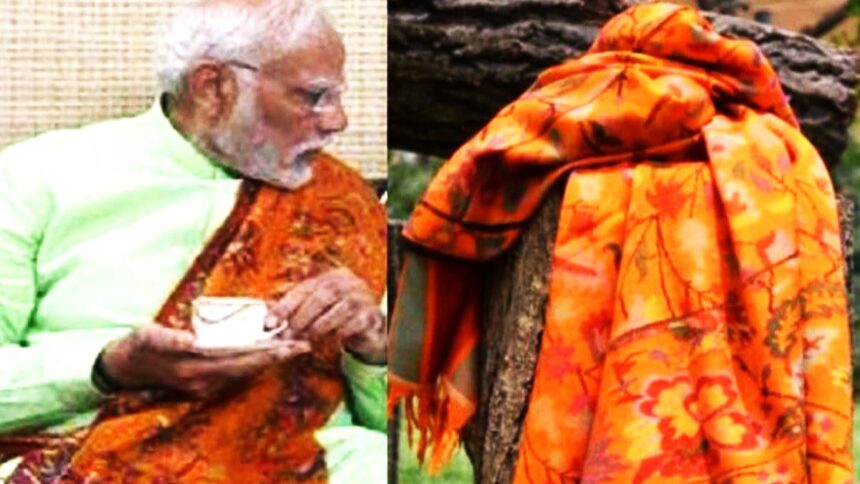If someone asks you about the merits of Kashmir, what do you remind? But do you know that such a precious shawl is also made in Kashmir which is famous not only in India but all over the world. We are talking about Kani Shawl which shows the amazing art of the artisans of India.
This is a colorful shawl whose history is as old as the Mughal era and it takes from a month to more than a year to make it. Today it is being prepared in the beautiful plains of Kashmir. Let me tell you, wooden bars are used to make this shawl prepared from pashmina wool, which is called kani. It was well liked even during the Mughal rule. Covering its hundreds of years of history, the artisans of India are busy adding new colors to this ancient art today. Let us know what is its specialty and how this art reached India.
Kashmir’s Kani shawl
For the first time in the 15th century, Persian and Turkish weavers brought this art to Kashmir. It has always been very important for the artisans to have patience for its weaving. The reason is that sometimes 3-4 years are spent in preparing a shawl. During this time they have to work for 6-7 hours a day and a shawl has to pass through the hands of not one or two, but 3-4 artisans during its making.
Its process is very similar to the weaving of a carpet. In a day it is able to prepare only 1-2 centimeters, the rest also depends on how the artisan is given to make the design. Obviously, the more nuanced the design, the longer it takes to make it.
What is its specialty?
The most special thing about Kani Shawl is its Color Theory, which has always been inspired by nature. Today, Kani shawl is being revived from Kanihama, a small village about 20 km from Srinagar. It would not be wrong to say that the artisans of India adding new color to the old art are not really the answer.
Also included in PM Modi’s wardrobe
Kani shawl has long been included in the dress of the kings and maharajas of India. You must have seen this shawl on Prime Minister Narendra Modi’s shoulder many times. The unique art of making it was introduced to Zain-ul-Abidin by the eighth Sultan of Kashmir, Ghiyas-ud-din. Since then, it has captured the hearts of many people around the world. Let me tell you, this shawl was considered to have played a big role in gracing Mughal kings, Sikh Maharajas and the British aristocracy.






